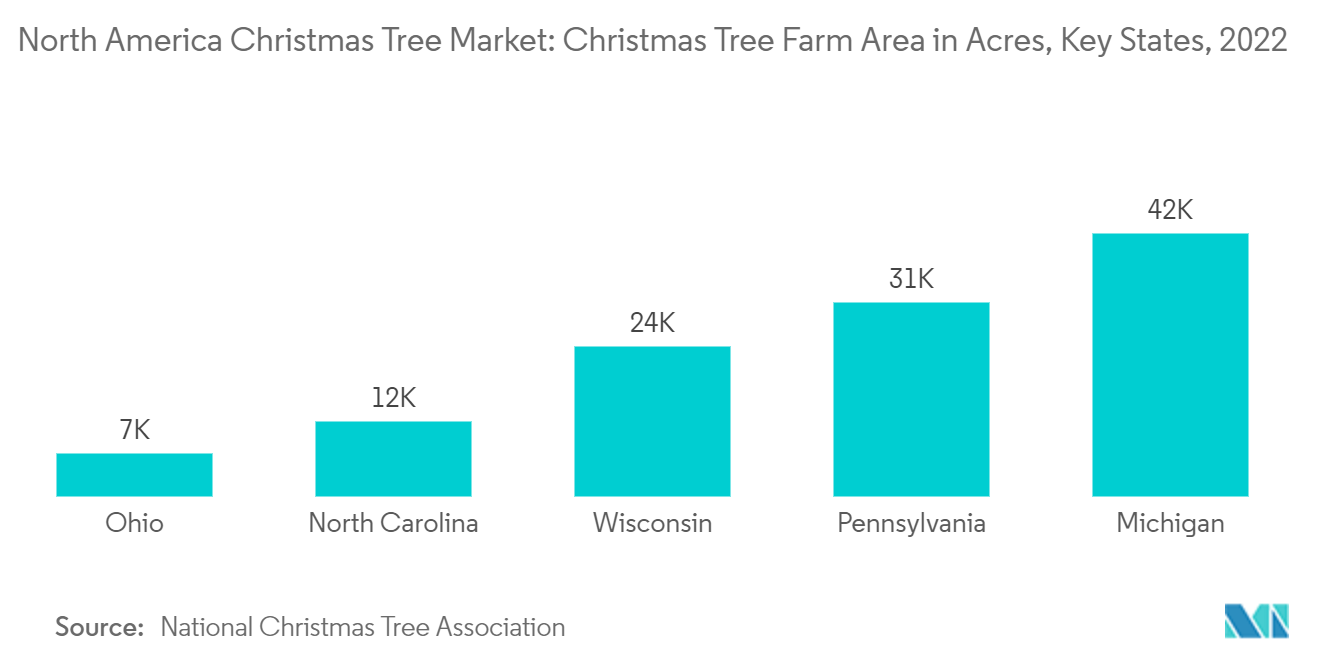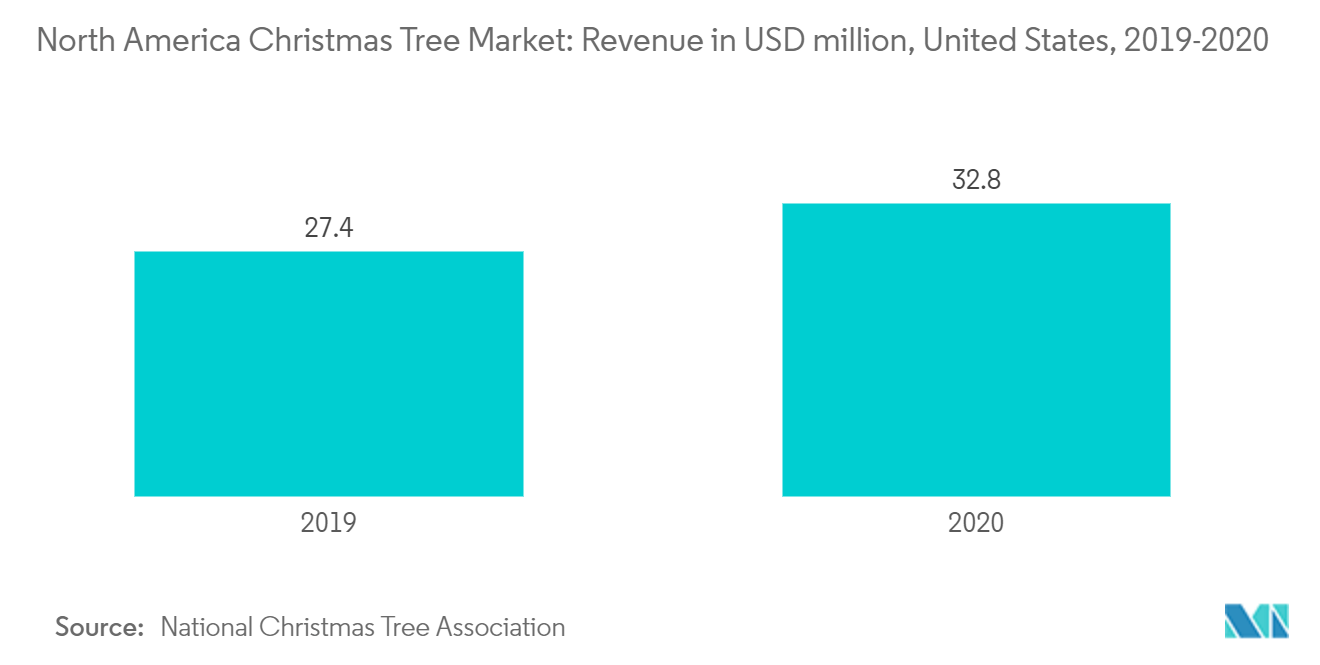Market Trends of North America Christmas Tree Industry
Growing Consciousness Toward Environmental Sustainability
- Artificial trees are manufactured from several types of plastic and metal. Processing these components takes significant energy and causes significant pollution. sustainability and eco-friendliness are becoming increasingly important factors in consumer purchase decisions, particularly among younger generations.
- As such, the demand for environmentally-friendly products, including real Christmas trees, will continue to rise in the coming years. This factor further corroborates a shortage in the domestic supply in the region, as trees, once planted, need 7-10 years to grow. Although a sizeable portion of trees planted in eastern Canada is shipped to the United States every year, demand in the destined market still outpaces the exports.
- Real Christmas trees can also be recycled for a considerable amount of time without any underlying environmental threat and can be turned into mulch or biofuel. With a declining number of farms amid a shortage in operations by senior farmers, a new wave of young farmers is expected to fill the documented gap in the country, thus stabilizing the domestic supply in response to the growing demand in the coming years.

The United States is the Largest Market for Christmas Trees
- Christmas trees are grown and harvested in all 50 states of the United States. Five states, Oregon, North Carolina, Michigan, Pennsylvania, and Wisconsin, lead in terms of both tree production and sales. Around 30 million natural Christmas trees are sold annually in the United States. To fulfill the market demand, over 100 million trees are growing on more than 15,000 farms nationwide. The United States is also a top exporter of Christmas trees, with trees shipped to a number of countries, including Canada, Mexico, Brazil, Russia, Japan, China, and the Philippines.
- Throughout the United States, more than twenty species of Christmas trees are grown, including Cedars (Deodar and Easter Red), Firs (Balsam, Douglas, Fraser, Grand, Noble, Nordmann, White, Afghan, and Austrian), Pines (Red, Ponderosa, Scotch, Virginia, and White), Spruces (Black Hills, Blue, Norway, and White), and Leyland Cypress.
- In 2021, nationally, about one-quarter of natural Christmas trees were purchased from choose and cut farms, 28.5% from chain stores (like Costco or Home Depot), 16.2% from retail lots, 11.6% from nurseries, and the rest from other sources like churches or boy scouts. Furthermore, the growing inclination of millennial consumers toward traditional and environmentally sustainable trees is further anticipated to lead the market's growth during the forecast period.

